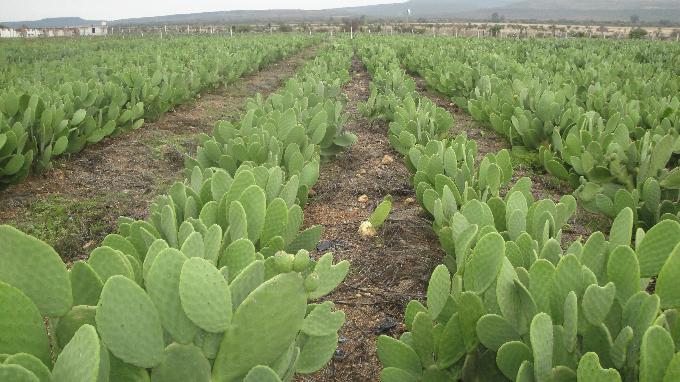Mexico is the leading producer of fresh prickly pear cactus for human consumption worldwide with 12,000 hectares planted and a production of nearly 825,000 tons per year. According to experts, apart from human consumption, this product could be used in other areas, such as cosmetics, fodder for livestock, the generation of biogas and electricity, or in the pharmaceutical industry.
Clemente Gallegos Vazquez, a researcher from the Autonomous University of Chapingo, said that, to increase production so it can be used industrially, Mexico needed the public and private sectors to invest more in this area because the production of shampoos, soaps, dietary fiber, and other products derived from cactus were still being crafted in a traditional manner.
However, Gallegos Vazquez believes the future of this plant lies in its fruits, in the tuna or in the xoconostle because of the properties they have, such as antioxidants, which are often similar to those of the strawberry. “The person in the pharmaceutical field that identifies, isolates, and purifies the active ingredient that controls diabetes (which could be in the xoconostle) is going to become rich,” he said. That’s why universities and research centers should pay more attention to this fruit’s potential, he added.
The other challenge for Mexico is facing its two major competitors, China and Brazil, which already produce prickly pear cactus on a large scale. China destines its production for the cosmetic sector and, according to the researcher from Chapingo, they might be conducting pharmaceutical research. Meanwhile Brazil is the largest producer and exporter cactus as fodder for cattle.
In an interview with La Razon, Gallegos Vazquez said: “Brazil is gaining ground on us because Mexico virtually has no fodder production.” The South American nation has 600,000 hectares to grow prickly pear cactus for fodder, which together with other elements supports a daily milk production of one 1.2 million liters. Meanwhile, Mexico uses wild cacti to feed its livestock.
The General Director of the National Agricultural Council (CNA), Luis Fernando Haro, said that China was beginning to corner the market for cosmetic or natural products derived from cactus, such as soaps or dietary fibers. “They gave it an added value,” he said.
Haro said there was only one producing company in China, but that it had invested more than $100 million dollars in their cactus crops. The company has 400 hectares of cactus in greenhouses and uses technology to increase their productivity and process the product and to give it an added value.
It’s worth noting that the National Depository of Opuntia has 410 varieties of cactus derived from 23 species. 62 of these varieties are classified as Opuntia Ficus-indica (or nopalito) which is used for food and is grown in the area of Milpa Alta in Mexico City and in Tlalnepantla, Morelos.
Researchers seek to generate electricity from the cacti
There are currently some projects underway in Michoacán and Aguascalientes to produce electricity and methane (biogas) with the prickly pear cacti or with the crop’s waste. However, to be effective there must be enough production for the whole year, i.e. there must be a production apart from the hectares cultivated for food and of the wild plants.
Gallegos Vazquez said that such projects were still in their investigation phase and that, since the cactus is a temporary plant, they needed to create a plan to define how to generate a large amount of biomass to make bioenergy in order for the project to be feasible.
“What we need to have is a production model that can ensure the supply of cacti to an industrial plant and we don’t have that yet. Thus, we are working with different varieties and testing fertilization ideas in order to produce as much biomass as possible. The idea is to achieve productions of nearly 600 tons per hectare,” he said.
Gallegos also said, recently, that there had been a depletion of wild cacti for various purposes, such as livestock. Thus, he warned, it was necessary not to use them in energy projects, as that could threaten some species that are not yet classified.
Source: razon.com.mx
Mexico is the leading producer of fresh prickly pear cactus for human consumption worldwide with 12,000 hectares planted and a production of nearly 825 . . .












